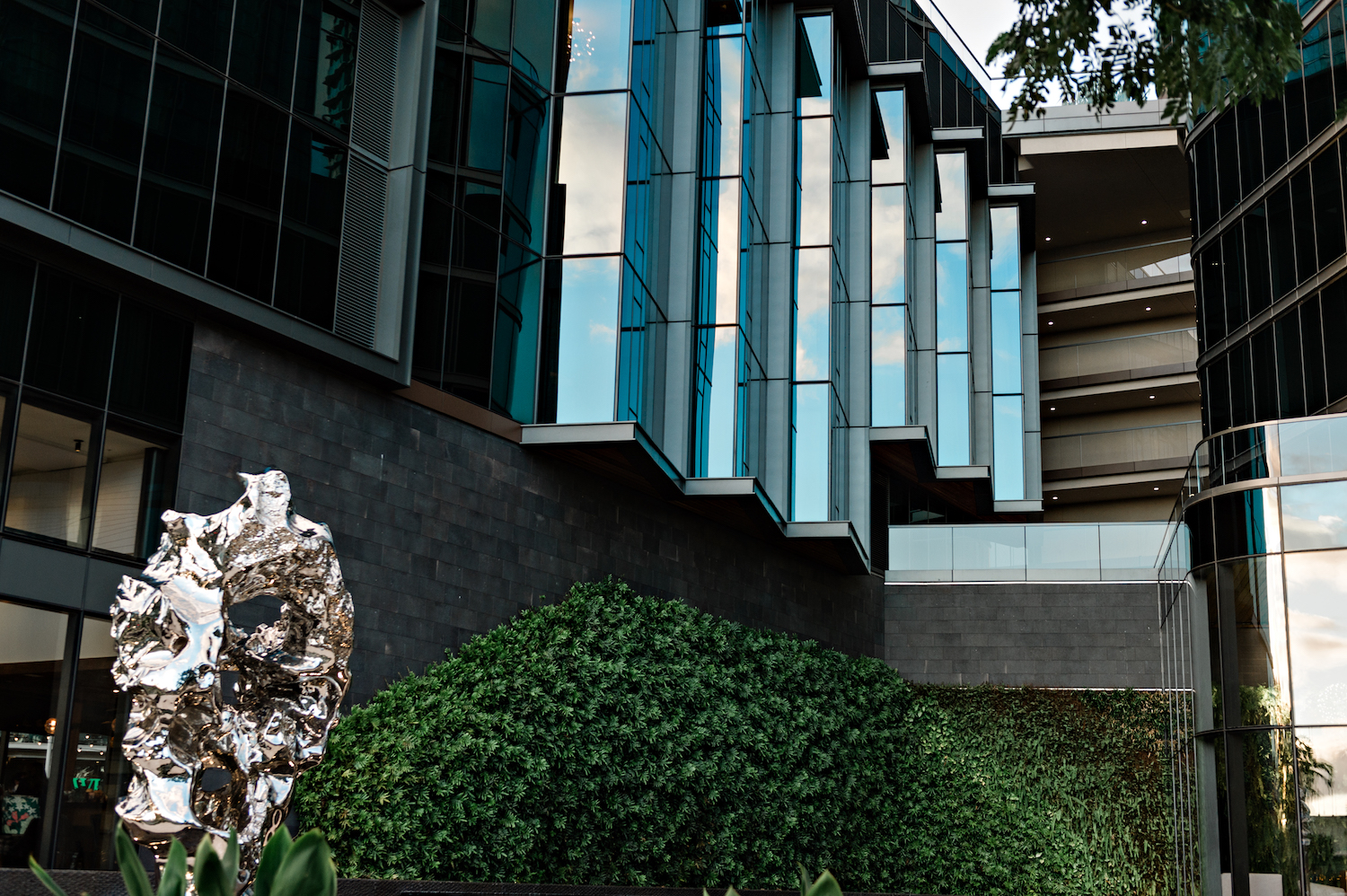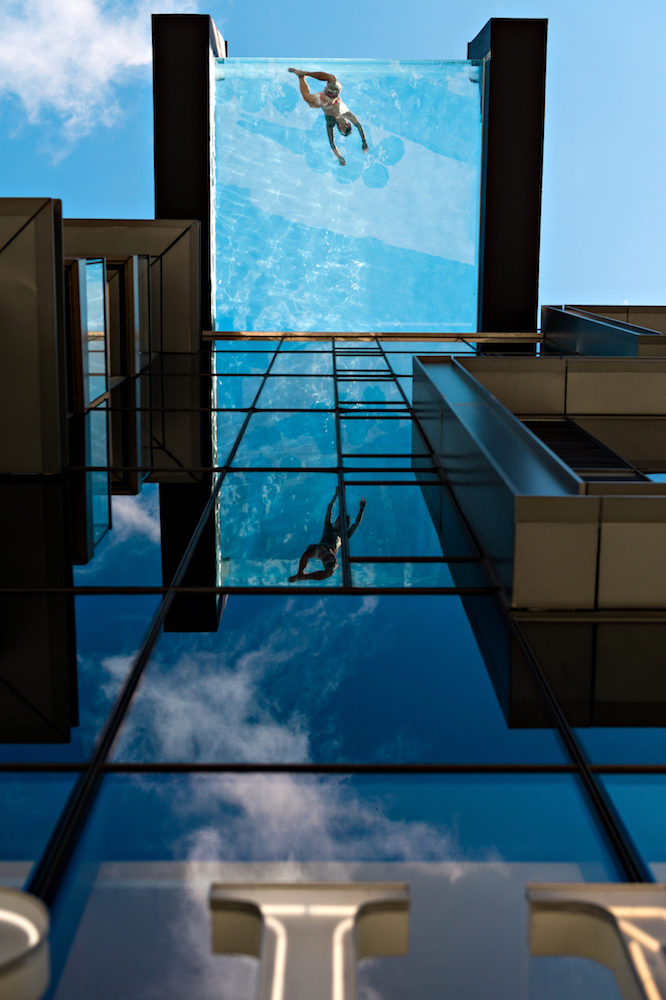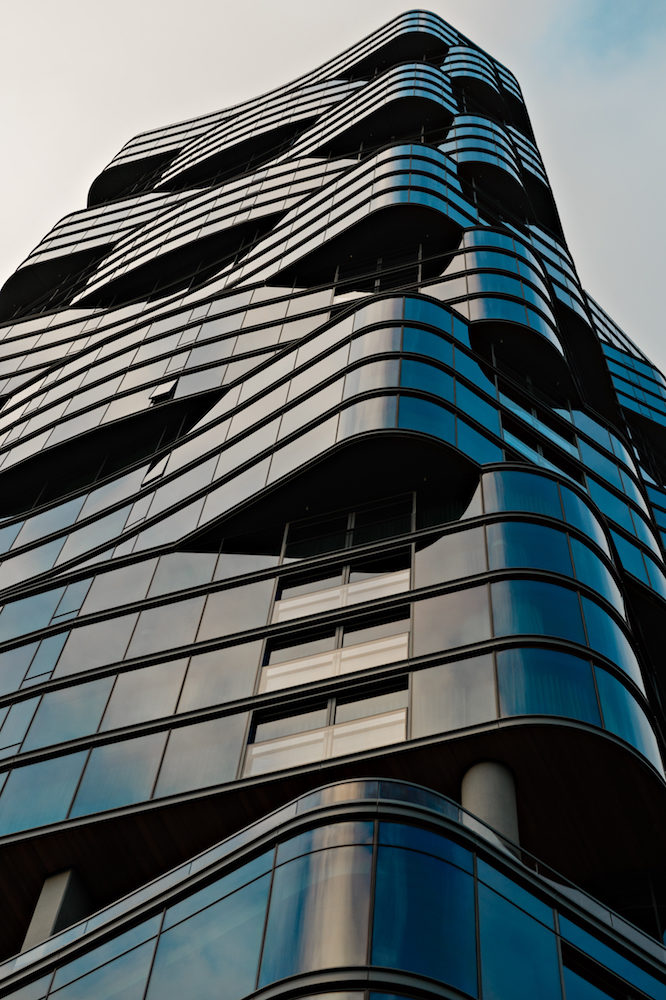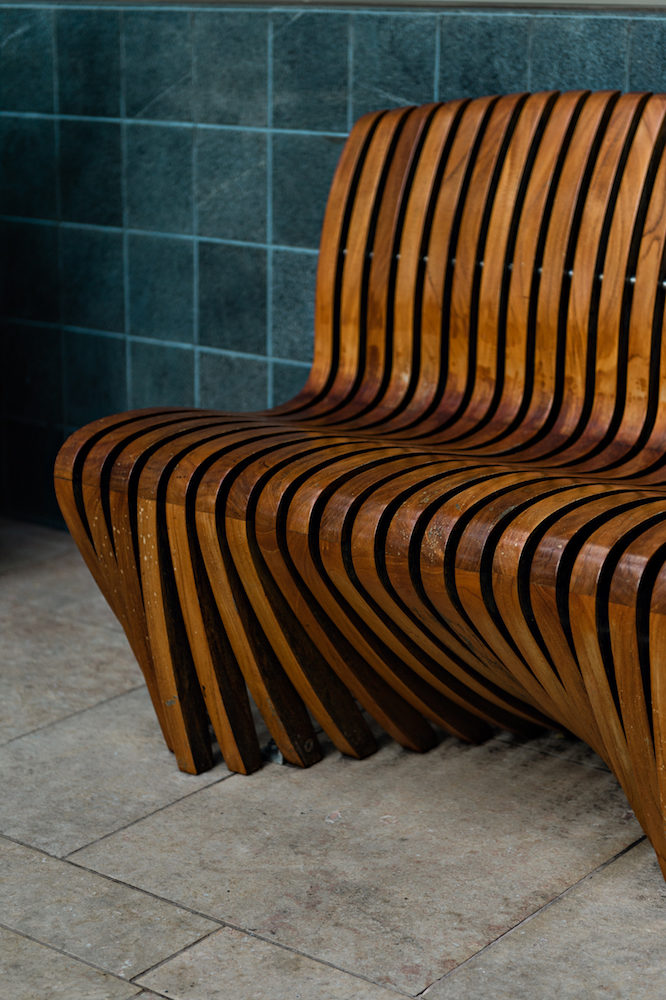Images by John Hook
A couple of years ago, a friend of mine got into a debate with a well-known architecture critic about the design of a new Apple store in Chicago. My friend wasn’t impressed with the building, and at some point said, essentially, that Chicago didn’t need another Apple store. Instead, he said, he would applaud Apple’s efforts when it built affordable housing on the South Side of Chicago. I remember that moment because it crystalized the way our relationship to architecture is colored by the cultural context in which we view it. Ten years earlier, in a different political climate, my friend may have felt differently.
Over the past several years, nearly everything in our lives has been assigned a value using an arbitrary and often binary system—good/bad, valid/problematic. Buildings are no exception. And yet rarely is architecture so one-dimensional. Ward Village in Kaka‘ako is a perfect example.
From the preservation of Vladimir Ossipoff’s IBM Building to the attention to detail evident in its high-rise towers, The Howard Hughes Corporation, the developer behind Ward Village, has put a premium on design in ways that other Hawai‘i developers have not. (Irongate, the developer behind Waikīkī’s Trump International Hotel and the Ritz-Carlton Residences, comes to mind.) Ward Village’s first three towers—Waiea, Anaha, and Ae‘o—are intensely sculptural, outliers in a sea of rectilinear concrete boxes. The news that Jeanne Gang, architect of Chicago’s Aqua Tower and recipient of a MacArthur Genius Grant, will design Ward Village’s next building only promises more prodigious architecture to come.

Generally speaking, we in Hawai‘i have little patience for high-rises, no matter who designed them. Their size and ostentation offend us. Could there be anything less Hawaiian than a great, gleaming obelisk reaching for the sky? And it’s not just here. Like the moon shot—which too has been hijacked by billionaires—skyscrapers are passé. Architecture critics bemoan them the world over, while to the public they are emblems of either ego or income inequality.
Often, it’s the height that bothers us. Over the course of the 20th century in Honolulu, as buildings went from 4 to 12 to 25 stories, concerned citizens decried the city’s changing skyline, the loss of the Honolulu they knew. The joke went that the state bird was the construction crane. Similar comments are made today, as Kaka‘ako undergoes rapid redevelopment and its warehouses and empty lots are alchemized into luxury condominium towers.
But at least one of the reasons condominium towers are treated like villains is because they’re so visible. Inescapably present, we project onto them all manner of sins—the depletion of Hawai‘i’s natural resources, the jacking-up of housing costs. In reality, density is good for Hawai‘i, especially compared to suburban-style sprawl. When Hawaii Loa Ridge was first developed above ‘Āina Haina in the 1980s, it suffocated previously undeveloped land with gaudy, Italianate mansions, each with their own pool (sometimes two) and as many as seven bedrooms. Urban high-rises such as those of Ward Village repurpose parking lots and big-box stores and further conserve resources by reducing commute times or eliminating the need to drive altogether. A tower like Anaha fits 300-plus units on less than two acres. The approximately 500 homes at Hawaii Loa Ridge occupy a land area 100 times that size.
But isn’t Ward Village just the 21st-century equivalent of a gated community? In some ways, yes. I certainly can’t afford to live there. But it’s misguided to say that because a building is prohibitively expensive its architecture is somehow bad. When I visit Shangri-La or the Liljestrand House, I don’t begrudge Doris Duke or Howard Liljestrand for their fortunes. (Well, maybe I do a little bit, but I certainly don’t write off the houses’ designs.) When I walk into the Honolulu Museum of Art, I don’t scoff at the Lichtenstein just because it cost almost $2 million. I may not be able to buy a certain kind of car, but that doesn’t mean I can’t appreciate the care that went into its making.
Besides, Ward Village isn’t gated. It’s right there, in plain view, with shops and restaurants lining the streets and park spaces. These buildings are part of Honolulu in a way that the homes at Hawaii Loa Ridge are not. If the design teams have done anything right, it is their acknowledgement of that fact, reflected in their commitment to well-designed public spaces at ground level.

The development’s emphasis on walkability is evident in the design of its streetscapes. Take, for instance, the generous walkways and planters brimming with Moloka‘i white hibiscus, or the geometric patterning of the sandstone outside Merriman’s, with every other zigzag sanded smooth, creating an asymmetrical, quasi-chevron pattern that elevates the plaza beyond that of a typical city sidewalk. Even the concrete pavers along Kamakee Street respond to the width of the walkway, narrowing where it narrows, widening where it widens, a subtle cue as if to say, this is a place to linger.
Here’s an assignment: Get a table at Piggy Smalls or on the lanai of Kaka‘ako Kitchen some afternoon. Watch the people walking by. Watch them notice the glass-bottomed swimming pool floating 75 feet above the sidewalk. Watch as they point and nudge their significant others, who subsequently pull out their cameras or phones. Watch them laugh and wave to the pool-goers above, who wave back, underwater, holding their breath. Watch as the sun arcs over the building, turning the pool into a prism that makes holographic snakes shimmer, sidewinder-like, across the glass.
It’s tempting to see that pool as a gimmick. But it hints at something rather profound: Imbued in the design of Ward Village is a desire to engage the public, to treat something as potentially stultifying as a luxury condominium building as a work of public art.
Ward Village is not perfect. Its streets are too wide, and the buildings all feel a little too new; the IBM Building notwithstanding, there’s not much in the way of character. The development can feel generic. And yet planned communities always require time to cure, and certain decisions made at Ward Village—like the choice to leave the Queen Street facades blank, done in anticipation of a future rail station—will only make sense as time goes on.
The strongest critique, of course, is one of affordability. But architecture is not housing policy. Ward Village isn’t solving Hawai‘i’s most pressing problems. I don’t think it pretends to. It does, however, offer moments of beauty. We don’t have to own the penthouse, or even be invited up to the pool. We do have to look closely and maybe block a few things out. It’s worth trying. Because if we can’t separate the object from the pedestal it sits on, we’ll end up missing out on a lot of the world.
This ran in our “living well” section, click to read the other story about native trees.





